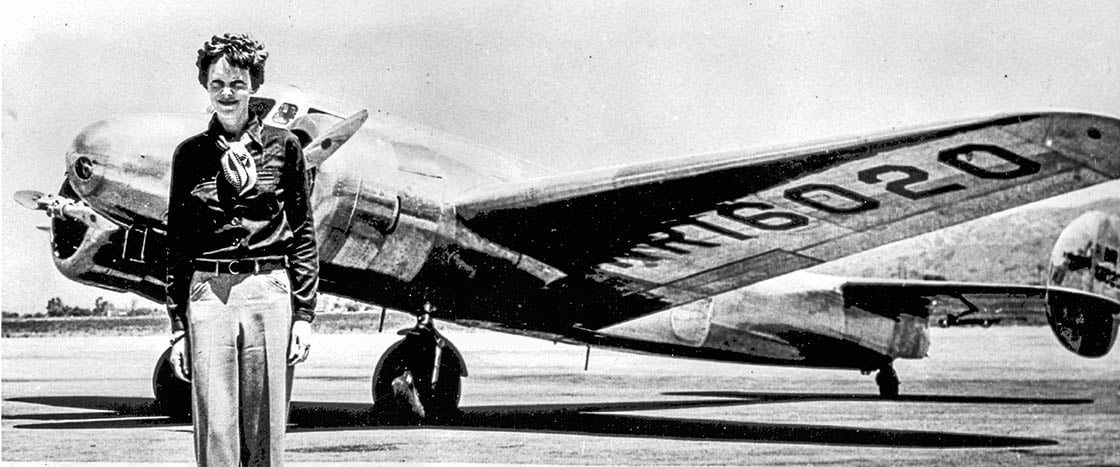The year 1937 had been a spectacular one for Amelia Earhart. She was a world-famous pilot. Her life was full of glamour and adventure. And she was fulfilling a lifelong dream: flying around the entire globe.
Earhart’s around-the-world journey started on May 20 in Oakland, California. From there, she flew over the clear waters of the Caribbean and the vast grasslands of Africa. She crossed over parched deserts in the Middle East, rugged mountains in India, and thick jungles in Southeast Asia.
By the time she reached the island of New Guinea, on June 29, she had traveled 22,000 miles over five continents. In a few days, she’d be back home in the United States.
But then, early on the morning of July 2, something went terribly wrong.
Earhart and her navigator, Fred Noonan, were supposed to land on Howland Island about halfway between Australia and Hawaii. But when they looked out the window of the plane, there was no island in sight. All they could see were the bright turquoise waters of the Pacific Ocean, just beginning to sparkle in the rising sun.
They were lost.
Now the plane was running out of gas. If Earhart didn’t find somewhere to land—soon—they were going to crash.
Earhart radioed for help.
No response.
She radioed again.
Silence.
Amelia Earhart would never be seen or heard from again.
The year 1937 had been a great one for Amelia Earhart. She was a famous pilot. Her life was full of glamour and adventure. And she was fulfilling a lifelong dream: flying around the entire globe.
Earhart’s around-the-world journey started on May 20 in Oakland, California. From there, she flew over the waters of the Caribbean and the grasslands of Africa. She crossed over deserts in the Middle East, mountains in India, and jungles in Southeast Asia.
By the time she reached the island of New Guinea, on June 29, she had traveled 22,000 miles over five continents.
In a few days, she’d be back home in the United States.
But then, on the morning of July 2, something went wrong.
Earhart and her navigator, Fred Noonan, were supposed to land on Howland Island about halfway between Australia and Hawaii. But when they looked out the window of the plane, they saw no island.
They were lost.
Now the plane was running out of gas. If Earhart didn’t find somewhere to land—soon—they would crash.
Earhart radioed for help.
No response.
She radioed again.
Silence.
Amelia Earhart would never be seen or heard from again.

